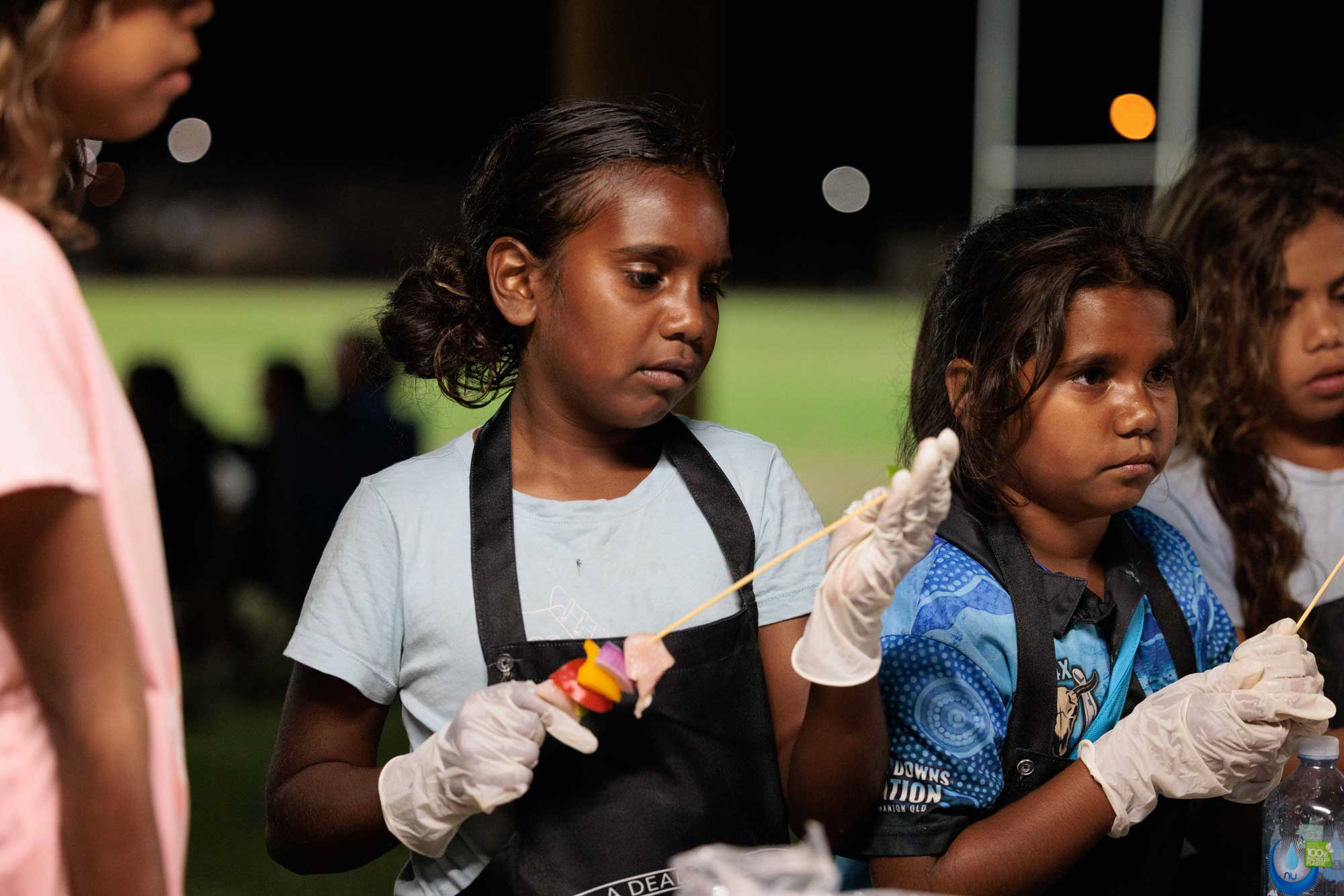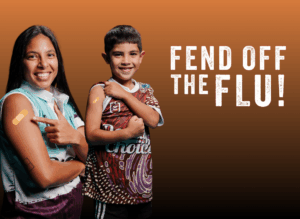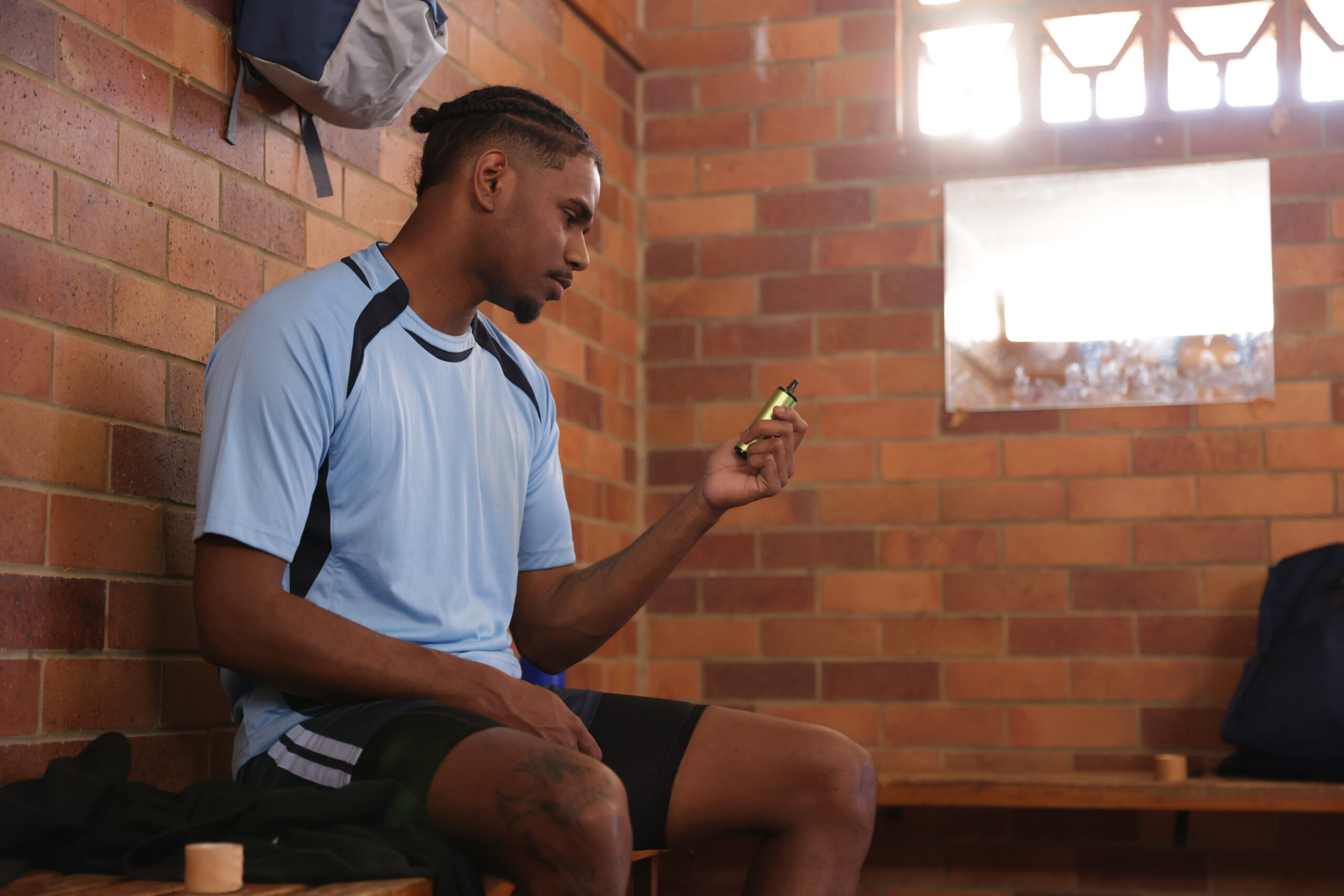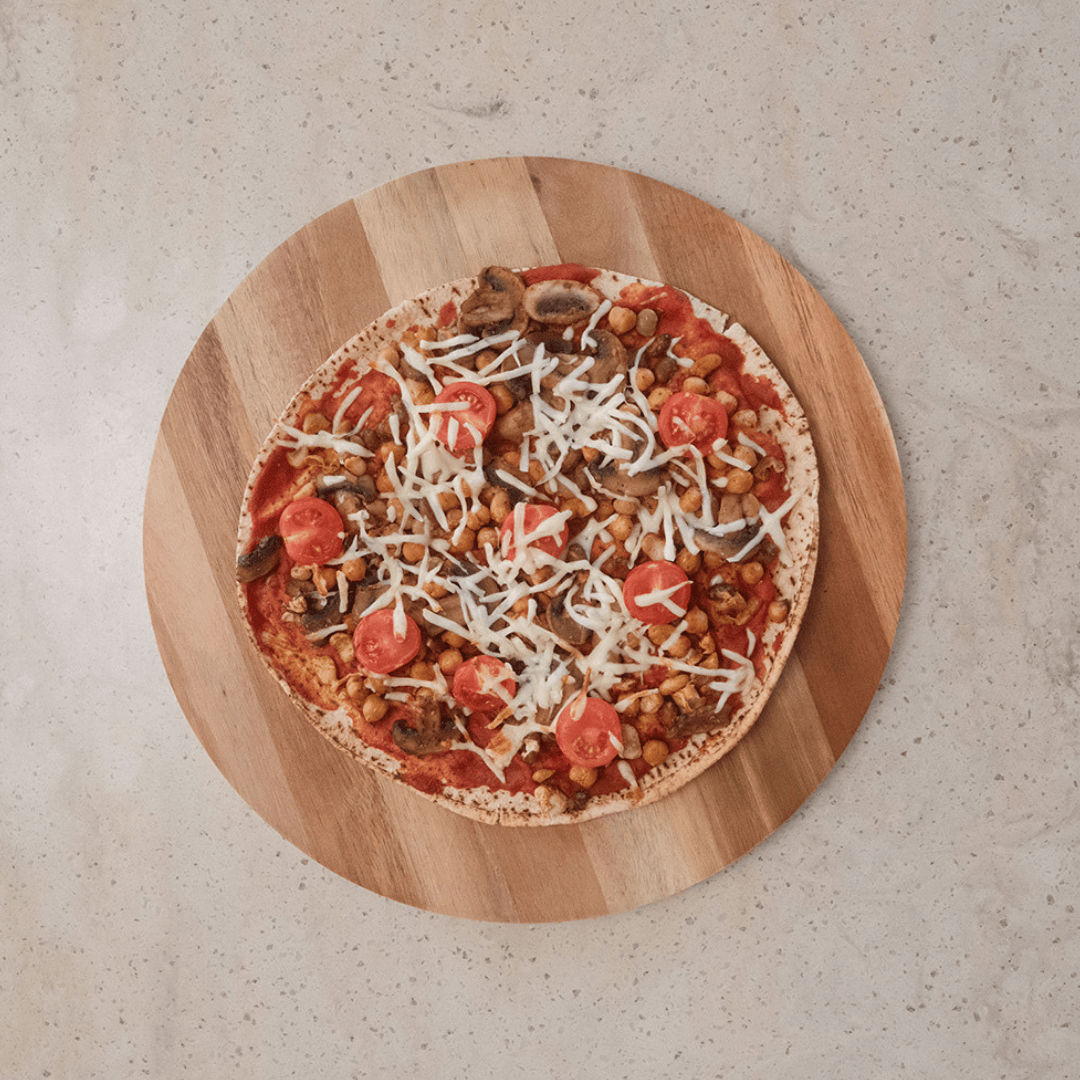Tobacco Information
It’s time to make a Deadly Choice and quit smoking.
History of Tobacco
Tobacco has become widely accepted and normalised in our communities.
Our peoples’ relationship with tobacco has changed since colonisation. Before the introduction of tobacco as we now know it, Aboriginal people in Central Australia used a plant called Pituri for a variety of cultural and functional purposes including trade, hunting, ceremonies and gifts between tribes. Made from native plants which contain nicotine, Pituri was prepared by drying and powdering the leaves of the plant and mixing with ash to create quids (balls).
Pituri is also knows as mingkulpa, mingulpa, ingulpa, pulandu, bulandu and piturr, in different languages and tribal groups.
Cigarettes and stronger forms of tobacco were introduced to Aboriginal peoples living on missionaries and working on cattle stations. Rations like tobacco, flour, sugar and alcohol were used as payment, influencing our peoples’ addiction to tobacco.
Tobacco was introduced to Torres Strait Islander peoples by pearl divers and trade routes via Papua New Guinea.
This resulted in tobacco addiction in the Torres Strait Islands.
Currently, tobacco is the leading cause of preventable death for Aboriginal and Torres Strait Islander peoples, with 37% of Mob over the age of 15 reporting that they smoke daily.9
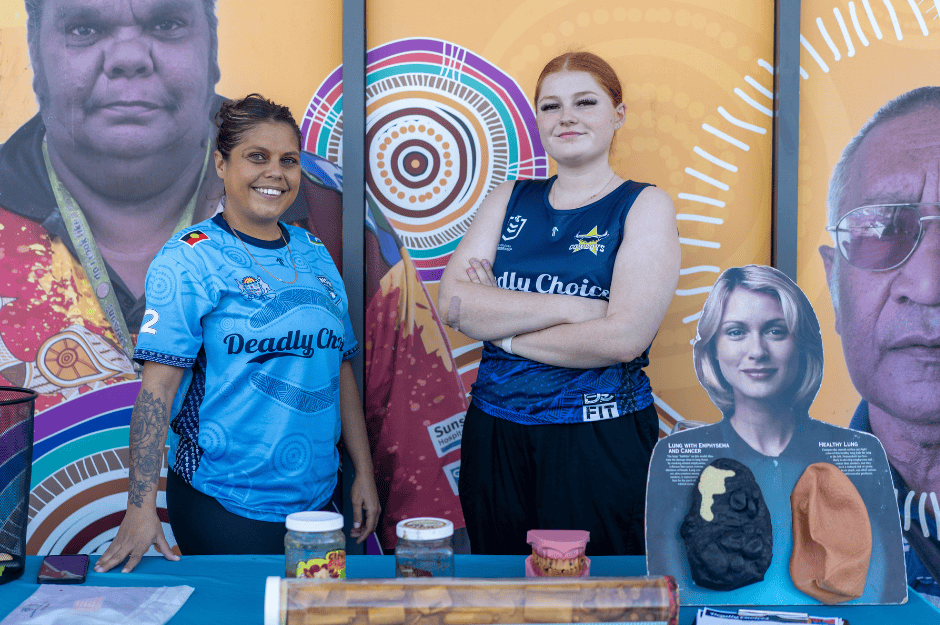
Health effects
When you quit the smokes or vapes, the benefit can be seen almost immediately.
Make a Deadly Choice for your body, your wallet and your Mob and quit today! Find out more on how to quit.
Tobacco smoking is the greatest contributor to disease for our Mob.1
Smoking can increase the risk of multiple cancers, lung diseases and cardiovascular disease.
There is no safe level of smoking, however, the more you smoke, the higher risk you are of developing a chronic condition.
Tobacco smoke is also the leading cause of emphysema, a lung disease which impacts many members of our community.10
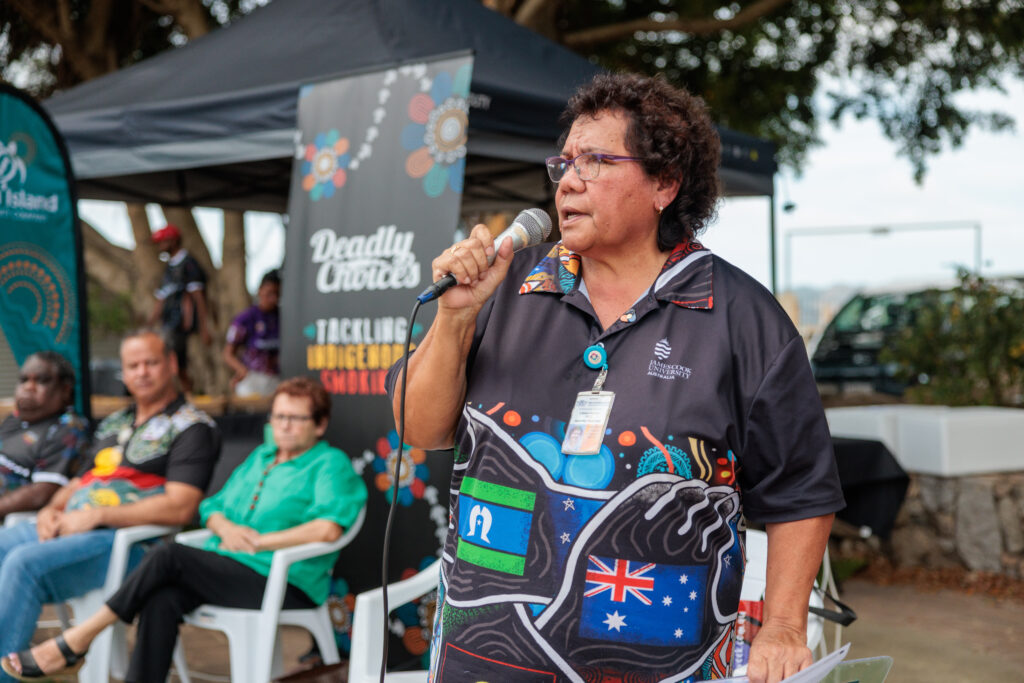
Emphysema causes damage to the air sacs (alveoli) in the lungs, resulting in the air sacs not being able to take in enough oxygen.
Individuals with emphysema will find it harder to breathe and get enough oxygen. Damaged airways don’t regenerate and there is no cure, however emphysema is preventable and treatable.11
Passive Smoking
Keep your Mob safe from passive smoking by keeping your space a smoke-free place. Removing the risk of passive smoke helps to keep your Mob strong and deadly and reduces the risk of tobacco related disease.
Smoking and tobacco don’t just impact the health of the user, but also those around them. Known as passive smoking, second and third-hand smoke can have negative health impacts on those regularly exposed.
Second-hand smoke
Occurs when a person inhales smoke exhaled by a smoker or from the end of a burning cigarette.2
Third-hand smoke
Occurs when inhaling tobacco smoke that has been absorbed in objects and surfaces, such as clothing, hair, furniture, walls, carpets, fabrics and toys. When a person smokes in a confined space such as a car or room, the smoke leaves chemicals on surfaces and attaches to dust, which can also contain nicotine.3
Passive smoking can also occur when vaping in enclosed or confined spaces.
Reducing the risk of passive smoking and vaping
To reduce the risk of passive smoking:
- Make your space a smoke and vape free place for everyone
- Remove all smoking related items (ash trays, cigarette butts, etc.)
- Clean all your surfaces, including materials and wash any clothes or toys that have been exposed to cigarettes or vapes
- Try to air out your space as much as possible to remove any airborne smoke particles (open windows, use fans, etc.)
Pregnancy and smoking
A deadly smoke and vape free mum, help to create a safer pregnancy for bub.
Tobacco use increases the risk of pregnancy complications. Smoking affects mum and bub at all stages of pregnancy, including preconception and post-partum.
Chemicals
There are between 4,000 – 7,000 chemicals found in a single cigarette4, with more than 70 of these chemicals known to cause cancer.5 These chemicals are often highly toxic and cause great harm to the body.
Chemicals commonly found in cigarettes include:
- Tar (road base)
- Carbon Monoxide (car exhaust fumes)
- Nicotine (the chemical that causes addiction)
- Formaldehyde (embalming fluid)
- Acetone (nail polish remover)
- Ammonia (toilet cleaner)
Nicotine
Nicotine is the major addictive chemical found in cigarettes. It works by triggering the brain to release dopamine (the chemical that makes you feel happy) after inhalation. This leads to smokers wanting to feel this again and again, becoming a craving.
Getting Help
You aren’t alone in your quit journey. There are a range of places you can get professional help to complement your support.
If you are thinking of quitting, visit your local Community Controlled Health Service, GP or contact Quitline (13 78 48) and ask for support and advice on quitting.
References
- Australian Institute of Health and Welfare. (2022). Australian Burden of Disease Study: impact and causes of illness and death in Aboriginal and Torres Strait Islander people 2018. Canberra: AIHW. https://www.aihw.gov.au/reports/burden-of-disease/illness-death-indigenous-2018/summary
- Greenhalgh, E., Scollo, M., & Winstanley, M. (2023). Tobacco in Australia: Facts and issues. Melbourne: Cancer Council Victoria. https://www.tobaccoinaustralia.org.au/
- Ibid.
- Centers for Disease Control and Prevention (US), National Center for Chronic Disease Prevention and Health Promotion (US), & Office on Smoking and Health (US). (2010). How Tobacco Smoke Causes Disease: The Biology and Behavioral Basis for Smoking-Attributable Disease: A Report of the Surgeon General. https:// pubmed.ncbi.nlm.nih.gov/21452462/
- Benowitz, N., Hukkanen, J., & Jacob, P. (2009). Nicotine chemistry, metabolism, kinetics and biomarkers. Handbook of Experimental Pharmacology, (192), 29–60. https://doi.org/10.1007/978-3-540-69248-5_2
- Goriounova, N., & Mansvelder, H. (2012). Short- and long-term consequences of nicotine exposure during adolescence for prefrontal cortex neuronal network function. Cold Spring Harbor Perspectives in Medicine, 2(12), 1-14. https://doi.org/10.1101/cshperspect.a012120
- Jiloha, R. C. (2010). Biological basis of tobacco addiction: Implications for smoking-cessation treatment. Indian Journal of Psychiatry, 52(4), 301–307. https://doi.org/10.4103/0019-5545.74303
- National Best Practice Unit Tackling Indigenous Smoking . (n.d.). Facts about smoking. Tackling Indigenous Smoking. https://tacklingsmoking.org.au/facts-about-smoking/
- Australian Institute of Health and Welfare. (2023). COPD. https://www.aihw.gov.au/reports/chronic-respiratory-conditions/copd
- Victorian Government. (2021). Emphysema. https://www.betterhealth.vic.gov.au/health/conditionsandtreatments/emphysema




